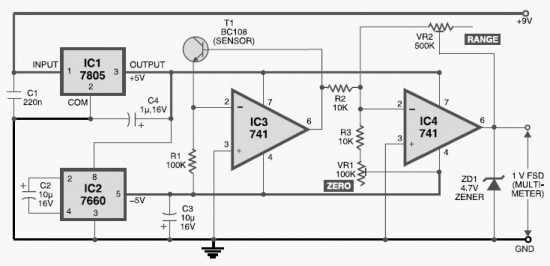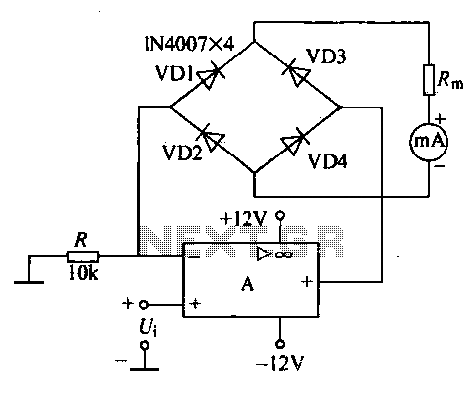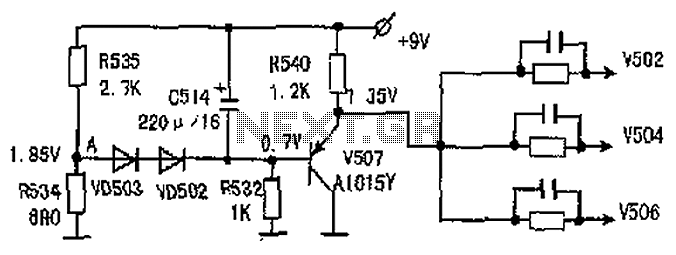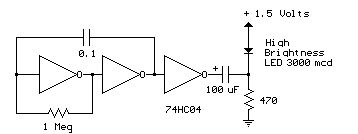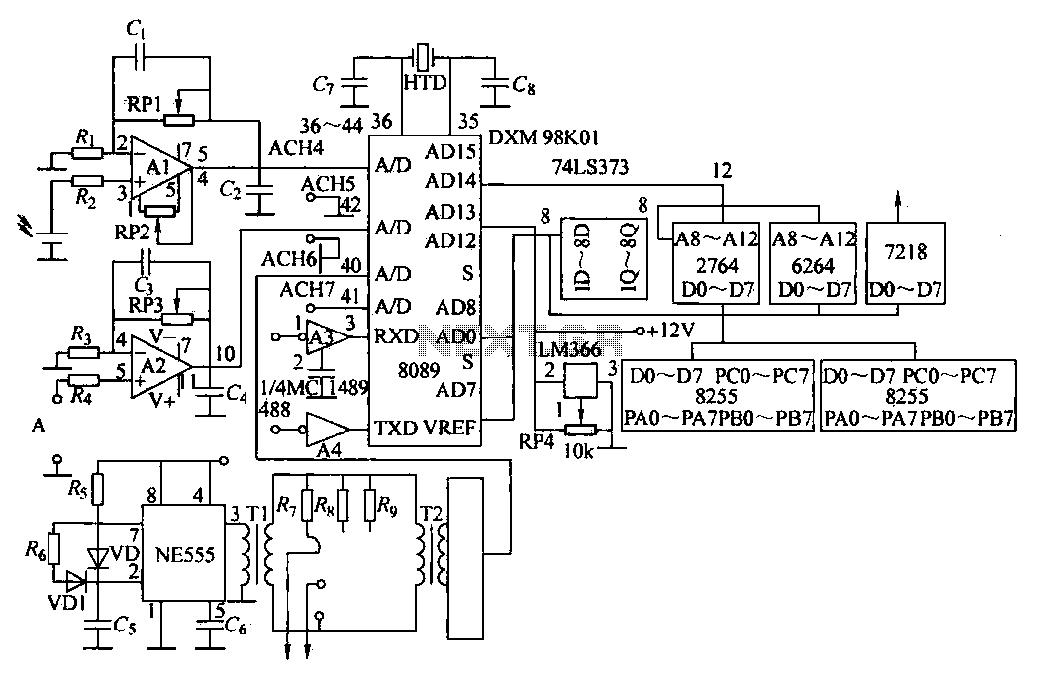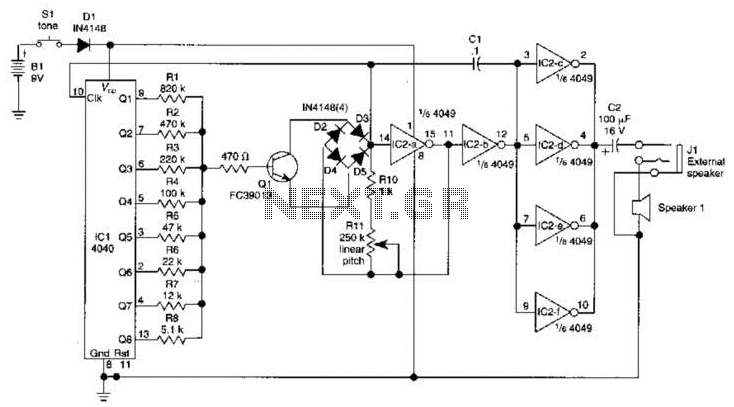
compact dj station circuit diagram
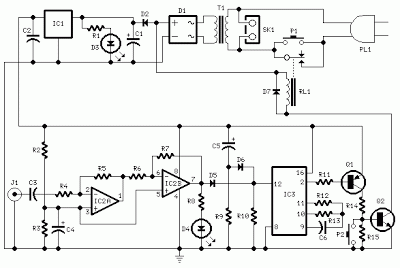
The mixer features two stereo phono inputs and two stereo line-level inputs, along with one stereo bonded channel. It also includes a microphone input and a stereo output with adjustable gain.
The mixer is designed to accommodate a variety of audio sources, making it suitable for both live sound applications and studio recordings. The two stereo phono inputs allow for the connection of turntables or other devices that output a phono-level signal, while the two stereo line-level inputs are intended for devices such as keyboards, drum machines, or other audio equipment that operates at line level.
The stereo bonded channel provides the capability to merge two mono signals into a single stereo output, which is particularly useful for applications requiring the combination of multiple audio sources. The microphone input allows for the connection of dynamic or condenser microphones, enabling vocal or instrument amplification.
An adjustable gain control on the stereo output allows for fine-tuning of the output level, ensuring optimal signal strength and clarity. This feature is essential for preventing distortion and maintaining audio quality, especially when interfacing with various sound systems or recording devices.
Overall, the design of the mixer emphasizes versatility and ease of use, making it an essential tool for audio professionals and enthusiasts alike. The layout typically includes clearly labeled input and output jacks, gain controls, and possibly additional features such as EQ controls or effects sends, depending on the specific model.The mixer appearance two stereo phono inputs and two stereo line-level inputs and has one stereo bond channel. A microphone ascribe and a stereo capital achievement with adjustable accretion are additionally provided.
🔗 External reference
The mixer is designed to accommodate a variety of audio sources, making it suitable for both live sound applications and studio recordings. The two stereo phono inputs allow for the connection of turntables or other devices that output a phono-level signal, while the two stereo line-level inputs are intended for devices such as keyboards, drum machines, or other audio equipment that operates at line level.
The stereo bonded channel provides the capability to merge two mono signals into a single stereo output, which is particularly useful for applications requiring the combination of multiple audio sources. The microphone input allows for the connection of dynamic or condenser microphones, enabling vocal or instrument amplification.
An adjustable gain control on the stereo output allows for fine-tuning of the output level, ensuring optimal signal strength and clarity. This feature is essential for preventing distortion and maintaining audio quality, especially when interfacing with various sound systems or recording devices.
Overall, the design of the mixer emphasizes versatility and ease of use, making it an essential tool for audio professionals and enthusiasts alike. The layout typically includes clearly labeled input and output jacks, gain controls, and possibly additional features such as EQ controls or effects sends, depending on the specific model.The mixer appearance two stereo phono inputs and two stereo line-level inputs and has one stereo bond channel. A microphone ascribe and a stereo capital achievement with adjustable accretion are additionally provided.
🔗 External reference
Warning: include(partials/cookie-banner.php): Failed to open stream: Permission denied in /var/www/html/nextgr/view-circuit.php on line 713
Warning: include(): Failed opening 'partials/cookie-banner.php' for inclusion (include_path='.:/usr/share/php') in /var/www/html/nextgr/view-circuit.php on line 713
